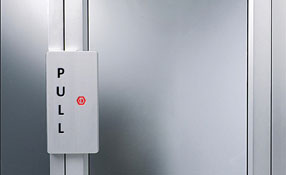 |
| Risk, in a security context, is the product of threat, vulnerability, and consequence |
Security as a discipline has been an important feature of society since cavemen started using the environment around them to protect themselves and their families. As a discipline, security has developed exponentially and that trend is continuing; however, somewhere along the way key elements of physical security design have been forgotten.
All too often solutions are deployed in a prescriptive way with little or no thought given to each aspect and its role in the overall security system. This has the potential to leave organisations exposed, unaware of the security threats they face, their vulnerabilities to these threats and ultimately, the potential consequences to their mission should they be subject to an attack. This article seeks to address why this is so often the case.
Professionals are frequently reminded that security is a risk based discipline, and that solutions, measures, systems, etc. should be ‘risk based’. But, all too often, these practitioners, let alone the organisations they represent, do not fully appreciate what risk is or how it can be measured objectively. Risk, put simply, is a product. Risk, in a security context, is the product of threat, vulnerability, and consequence and is therefore directly proportionate to each, jointly and severally.
So what does this all mean?
It means that we need to identify the most effective way of reducing security risk through any or a combination of the component factors, i.e. threat, vulnerability, and/or consequence. Unfortunately, far too much emphasis can be placed on the application of the latest security technologies without fully understanding the current situation and the strategic options available to an organisation. A balanced and holistic approach to security risk management can offer a host of benefits in addition to better security outcomes e.g. improved aesthetic, improved operational and cost efficiencies.
Once vulnerabilities have been |
This article focuses on vulnerability in detail and how to develop an effective physical security system that responds to credible threats. This is done through the development of a ‘Design Basis Threat’ (DBT). This is a statement akin to a mission statement for the bad guys, and articulates the worst-case, most credible threats likely to manifest against the ‘asset(s)’ that we are securing. The sort of information will vary depending on the threat; however, key ingredients will include; the adversary’s intentions, their numbers, their motivations, their resources, their skill level, their target(s), their experience, their methodology, and their transportation. Once we have a list of developed DBTs, we can then move on to assess our facility security or security plans.
Assessment and planning
This involves an assessment of vulnerabilities that would allow the adversary to succeed given the tactics outlined in the DBT. Vulnerabilities may exist in the planning and design of a building, the processes and procedures of a business, the networks and systems that support the business or even its staff.
The accuracy of the outputs of the vulnerability assessment ultimately depend on the accuracy of the DBT. For example, a single, opportunist burglar looking for easy-to-sell items, will adopt very different tactics to those of an organised crime group looking to steal the contents of a jewellery store safe. Having identified ‘who’ the adversary is, we can consider the path that our attacker is likely to take in their effort to achieve their objective. In doing so, we are able to establish what they will need to do to get to their target asset, i.e. pass through a door, cross some floor space, pass through another door etc. Each of these ‘activities’ offers us an opportunity to achieve key security functions i.e. deterrence, detection, delay, disruption and response.
An absence or inadequacy of these functions represents system vulnerabilities to the defined DBT. The paths are often referred to as the ‘adversary attack path’ (AAP) and analysis of these paths is critical to the success of the security system. It should be noted, that there will be a number of AAPs for any given asset and a thorough assessment of each may be necessary dependent on facility type, layout, purpose, risk etc.
A systems approach to security |
Determining vulnerabilities
A systems approach to security which builds on the principle of ‘defence in depth’ and provides a series of defensive layers around assets, builds system resilience where an adversary has to defeat several different measures to be successful. This increases complexity for the adversary and removes single points of failure for the asset owner.
Once vulnerabilities have been determined e.g. limited detection opportunities, inadequate delay or response capability; it is possible to assess whether treatment is required to bring security risk within the organisations risk acceptance criteria.
A new security system or improvements to an existing security system should be based on mitigating the observed vulnerabilities. This will require definition of performance requirements and documentation of all assumptions related to operational security management and incident response. For example, if your vulnerability assessment identified that the adversary was able to remove an asset because existing controls did not provide sufficient delay for timely response, then treatment options will likely include identification of opportunities for:
- Earlier detection e.g. at an earlier point in the adversary path
- Increased delay e.g. increased robustness of physical measures
- Reduced response times.
Finding optimum solution
There will inevitably be various environmental, physical, technical and procedural solutions that can meet the security functional requirement, but a holistic approach will be required to find an optimum solution for the organisation and this will need to take into account:
- Organisational and stakeholder requirements, policies and procedures;
- Site and building attributes;
- Use, functions and activities;
- Cost;
- Ease and time for procurement and implementation;
- Aesthetic quality.
This is the ‘art’ of security system design and is often lacking in prescriptive, off-the-shelf solutions.






















